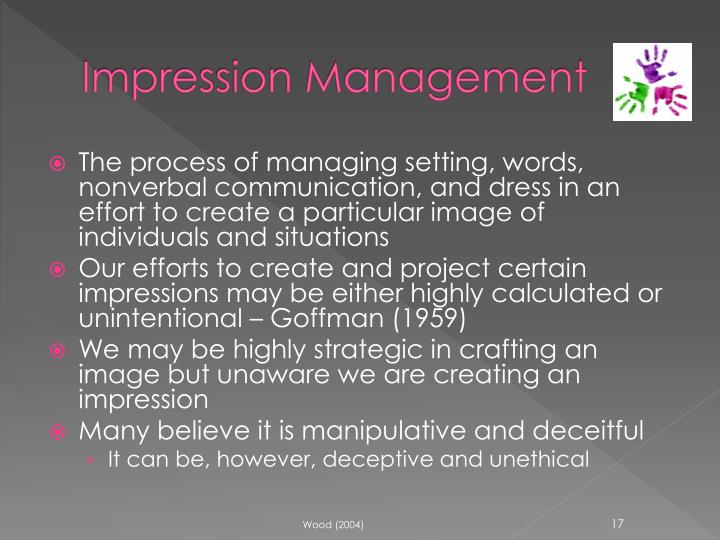

Strategic Management Journal, Wiley Blackwell, vol. " Reputation and corporate strategy: A review of recent theory and applications," International Journal of Revenue Management, Inderscience Enterprises Ltd, vol.
#COLLECTIVE IMPRESSION MANAGEMENT PROFESSIONAL#
" Creating revenue via Organisational 'Brandpression' Management (OBpM): a marriage of brand management and impression management in professional sport,"

Sport Management Review, Taylor & Francis Journals, vol. " Extending the Scope of Organisational Culture: The External Perception of an Internal Phenomenon," " Theory and theory development in sport management," RAND Journal of Economics, RAND Corporation, vol. " Something to prove: reputation in teams," The Service Industries Journal, Taylor & Francis Journals, vol. " Creating the ‘Right’ Impression: Towards a Dramaturgy of Management Consultancy," " "A Theory of Collective Reputations" with Applications to the Persistence of Corruption and to Firm Quality,"ģ8, Institut d'Économie Industrielle (IDEI), Toulouse. " A Theory of Collective Reputations with Applications to the Persistence of Corruption and to Firm Quality,"ĩ3-13, Massachusetts Institute of Technology (MIT), Department of Economics.

Through the model of OrgIC, the authors contribute to theoretical development and discussion, and provide a tool that could be useful for evaluating the way that sport service organisations present themselves to consumers, and other external audiences. The authors discuss possible implications and outcomes in relation to previous literature emanating from various fields (e.g., sport management, management, and marketing), and suggest directions for future research. The conceptual model is underpinned by theories associated with impression management, reputation (as an outcome of impression management action), and cognitive dissonance theory as the basis for outcomes of in/congruence. In this article, the authors present a conceptual model of organisational impression congruence (OrgIC), proposing that organisations will elicit positive consumer-related outcomes if there is alignment between the desired organisational image(s), those projected by the organisation at the management/strategic level, and those projected by customer-facing employees. The management of images projected to consumer audiences is a key task for sport service organisations however, the number of “touch points” (interactions between employees and consumers) adds complexity to the process.


 0 kommentar(er)
0 kommentar(er)
